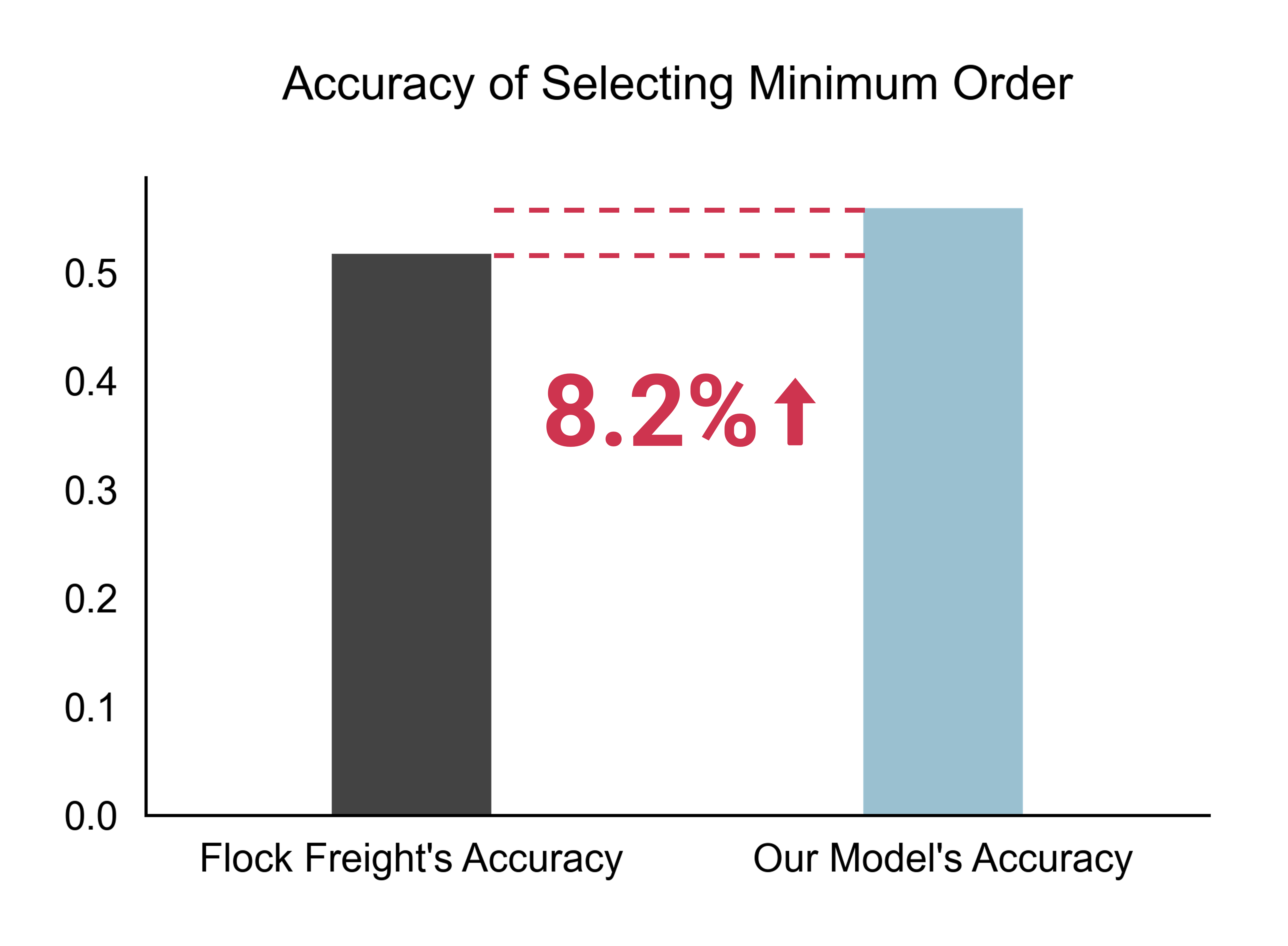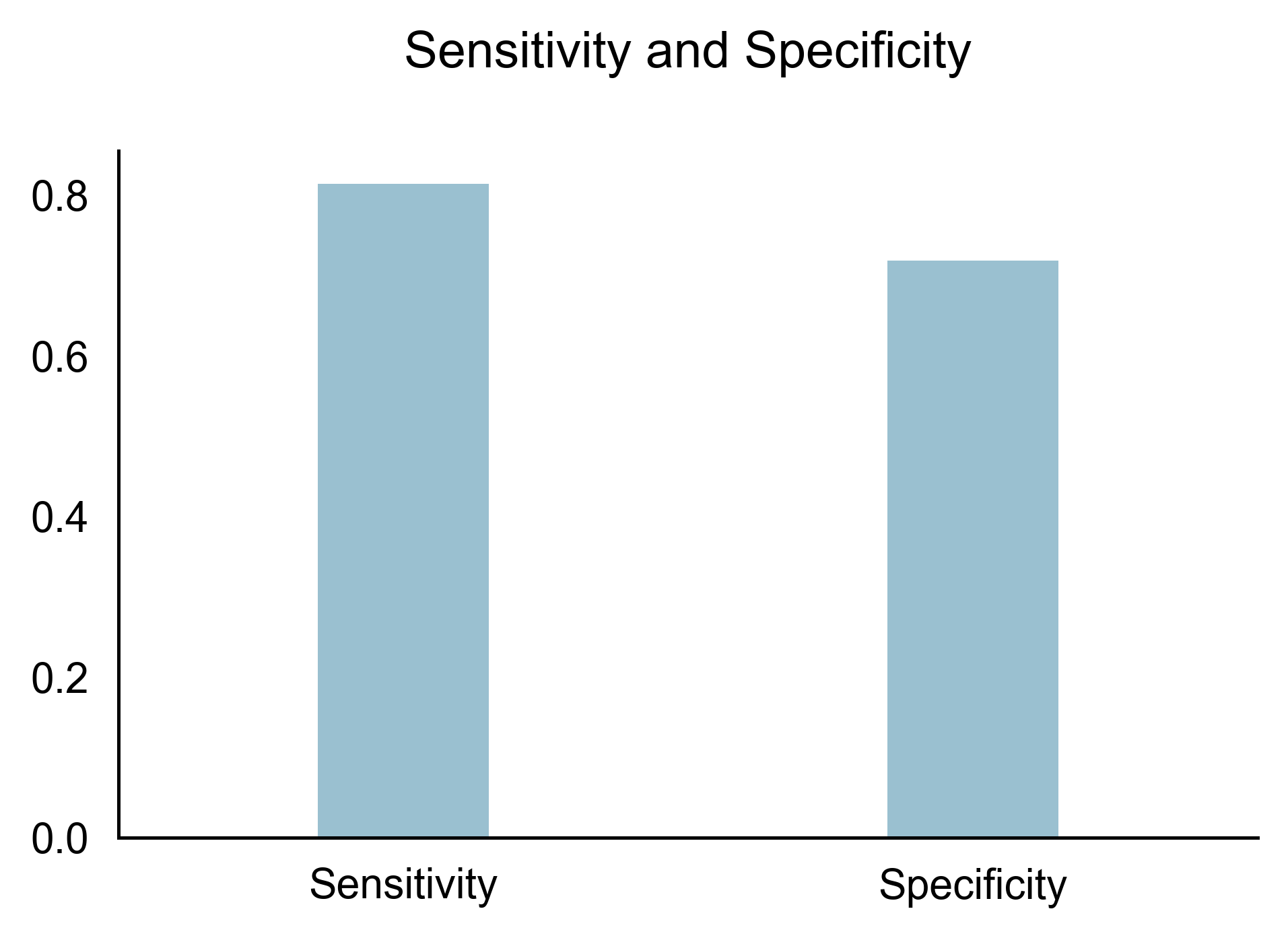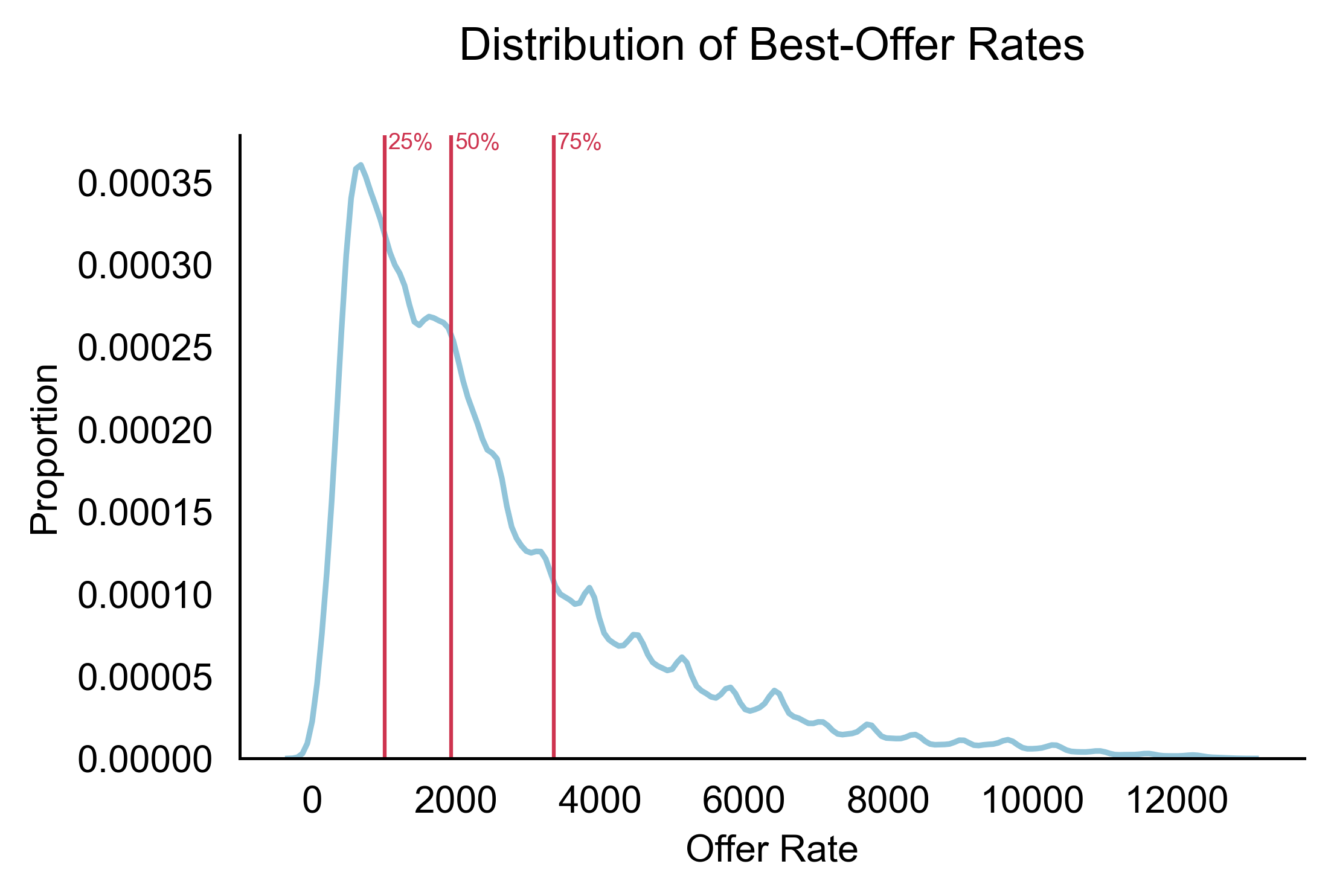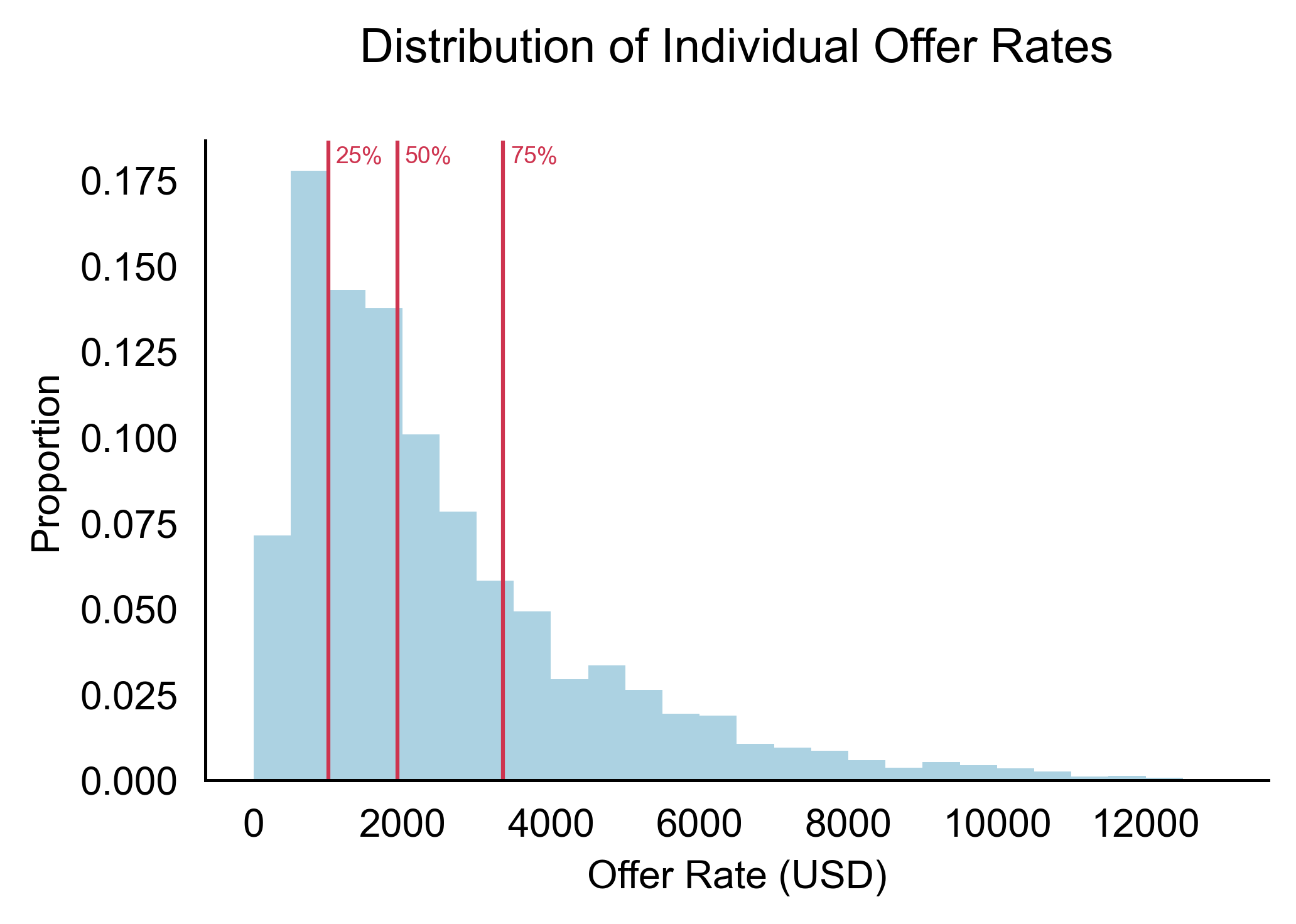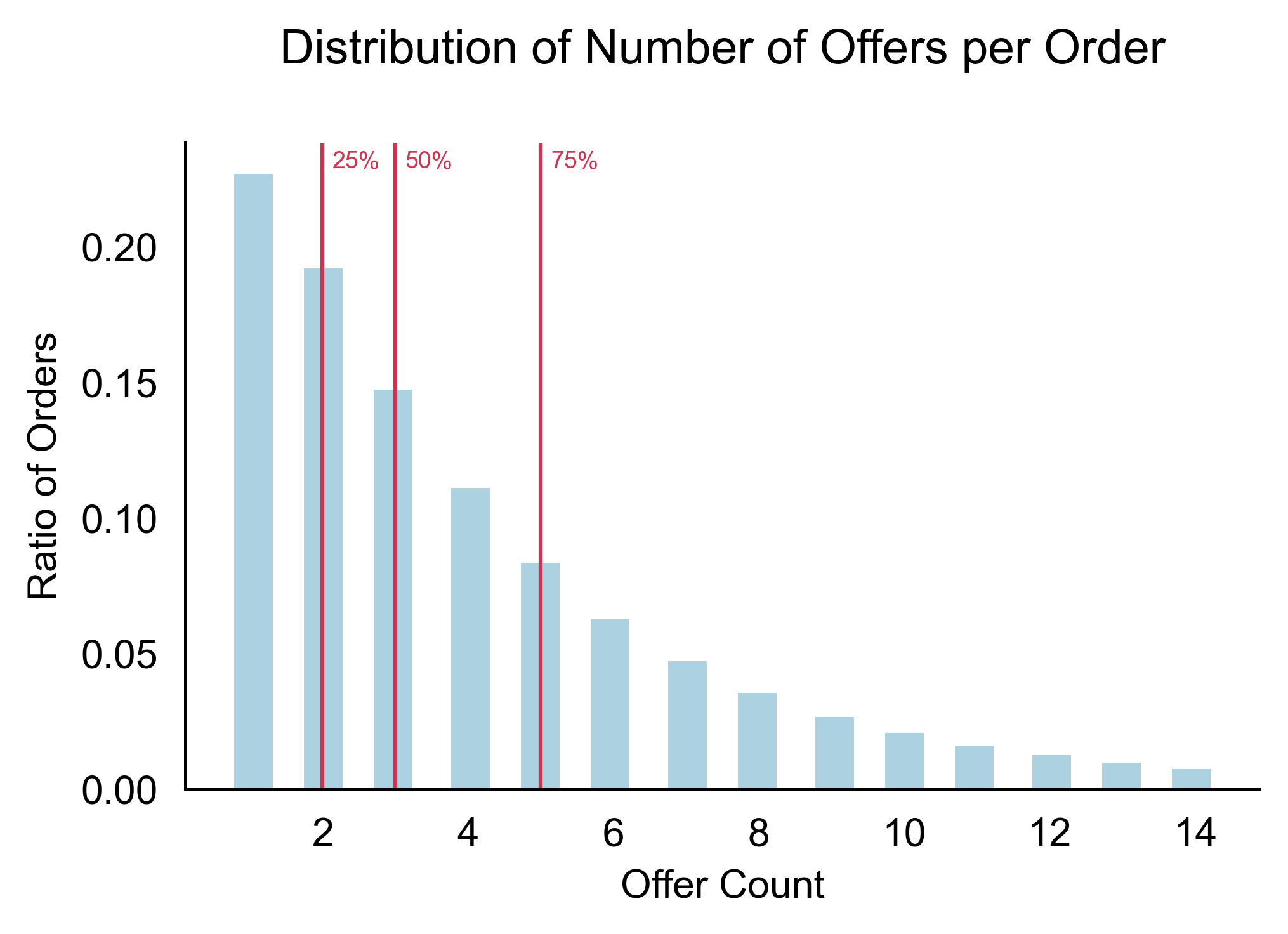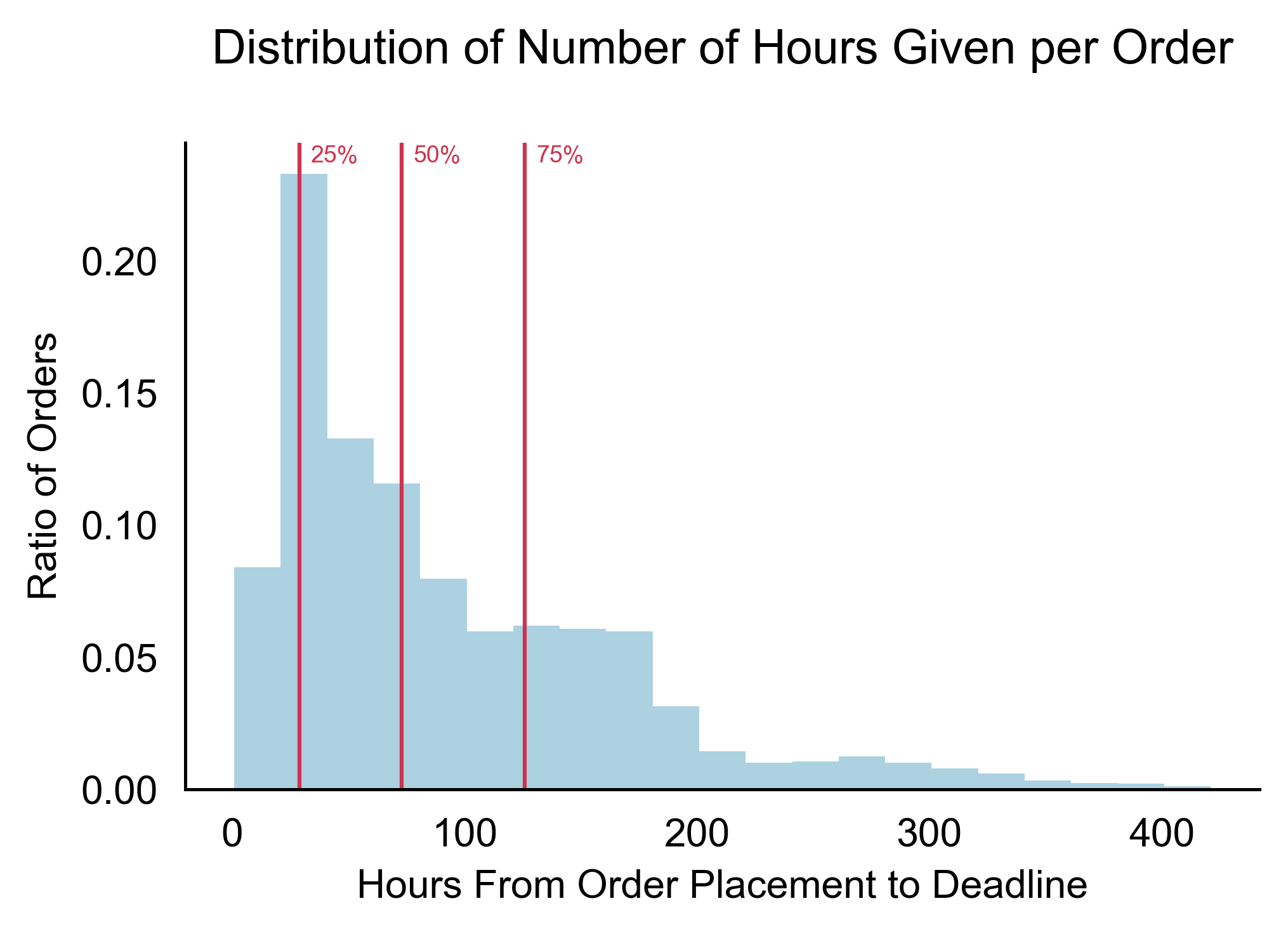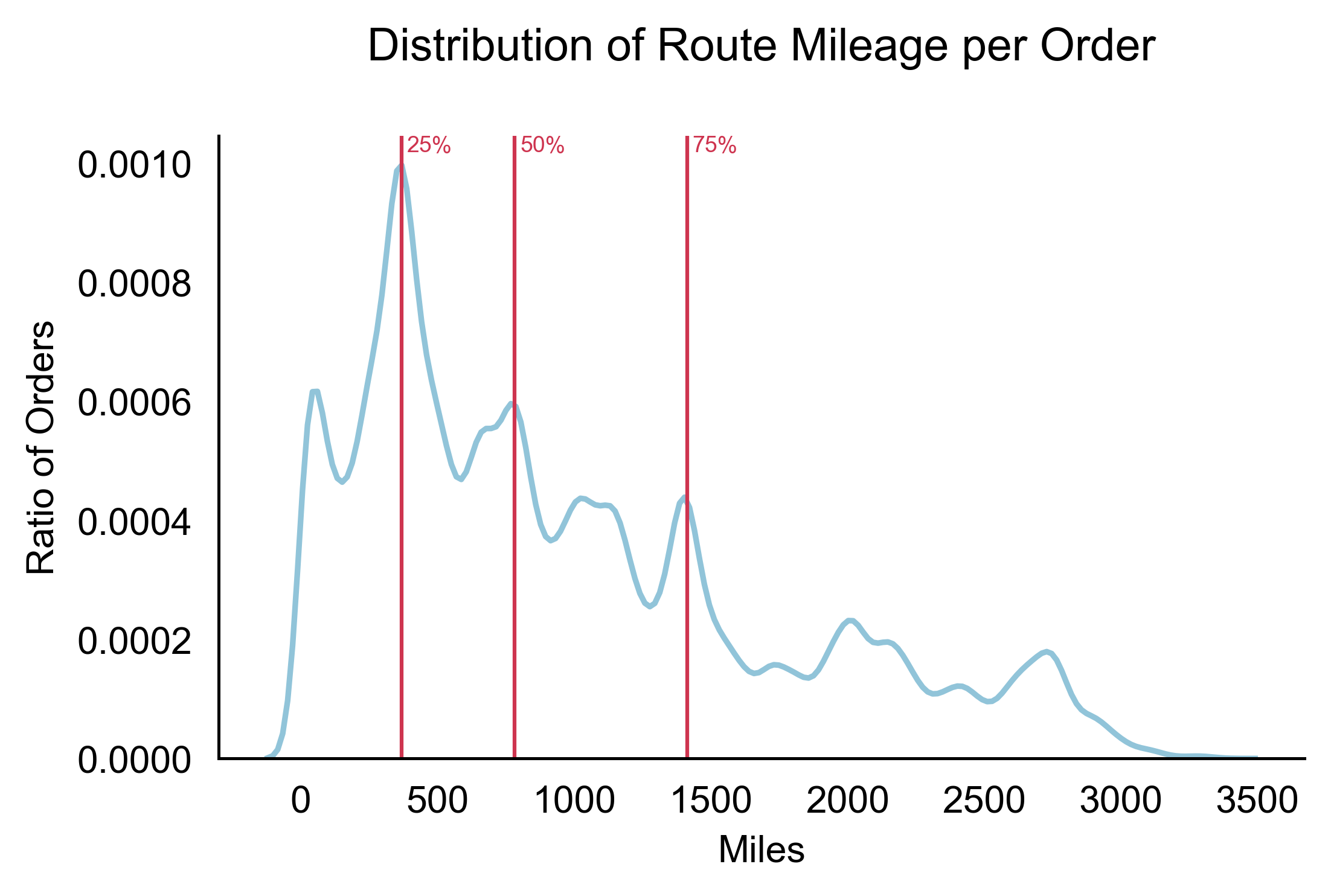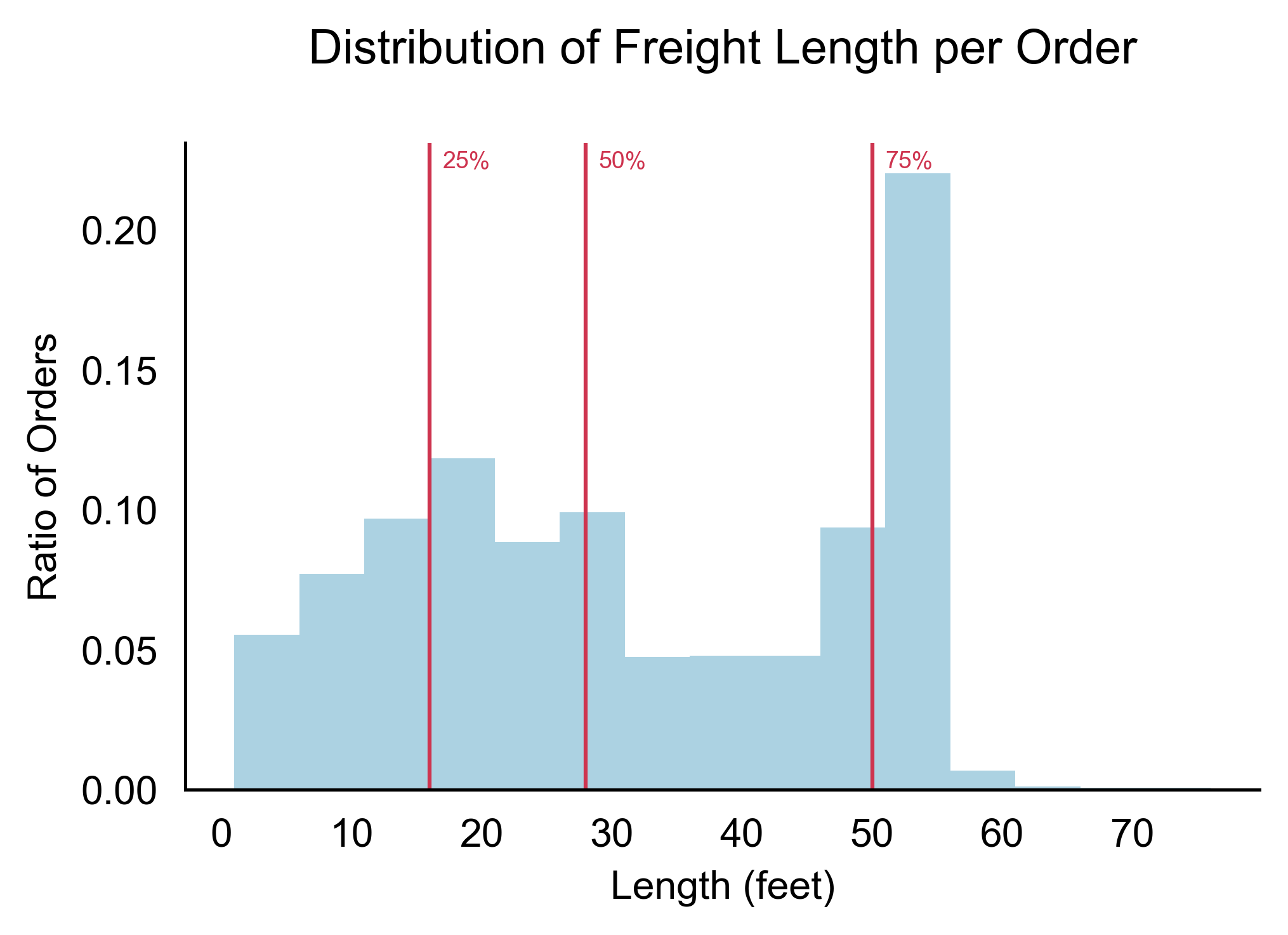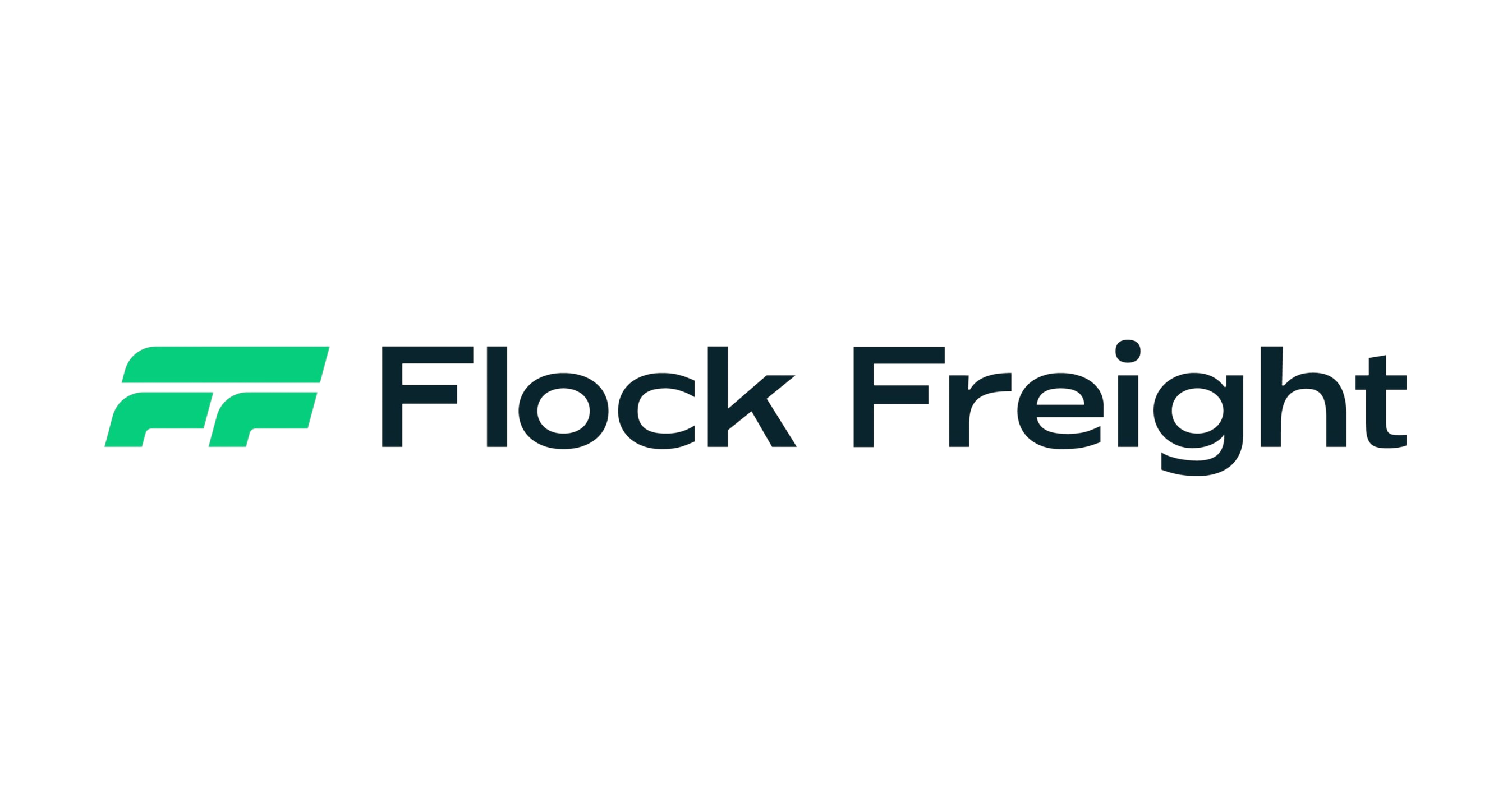BACKGROUND
Flock Freight is a logistics company that helps customers ship freights across the nation economically. Acting as a middleman between customers and freight truck companies, Flock Freight puts customers' orders to auction. Truckers make offers to ship the freight at a lower price.

Bidders can revoke their offers at any time, so Flock Freight must know when it sees a good offer -- waiting for a better offer means risking the current best offer to expire. This is called an Optimal Stopping Problem.

OBJECTIVE
Create an Optimal Stopping model that selects the best offer received for each order
DATA
There are 707,418 offers and 280,906 orders in the data set.
The offer data includes the offer date, offer rate, and offer type, which can be either PTL or FTL: PTL (Partial Truckload) shares a truck with multiple orders; FTL (Full Truckload) offers an entire truck to a single order.
The order data includes the order date, origin and destination zipcodes, route mileage, and preferences of the shipper.
EDA / DATA CLEANING / DATA ENGINEERING
Outliers such as offers with extreme delivery rates and orders with overwhelming numbers of offers were removed.
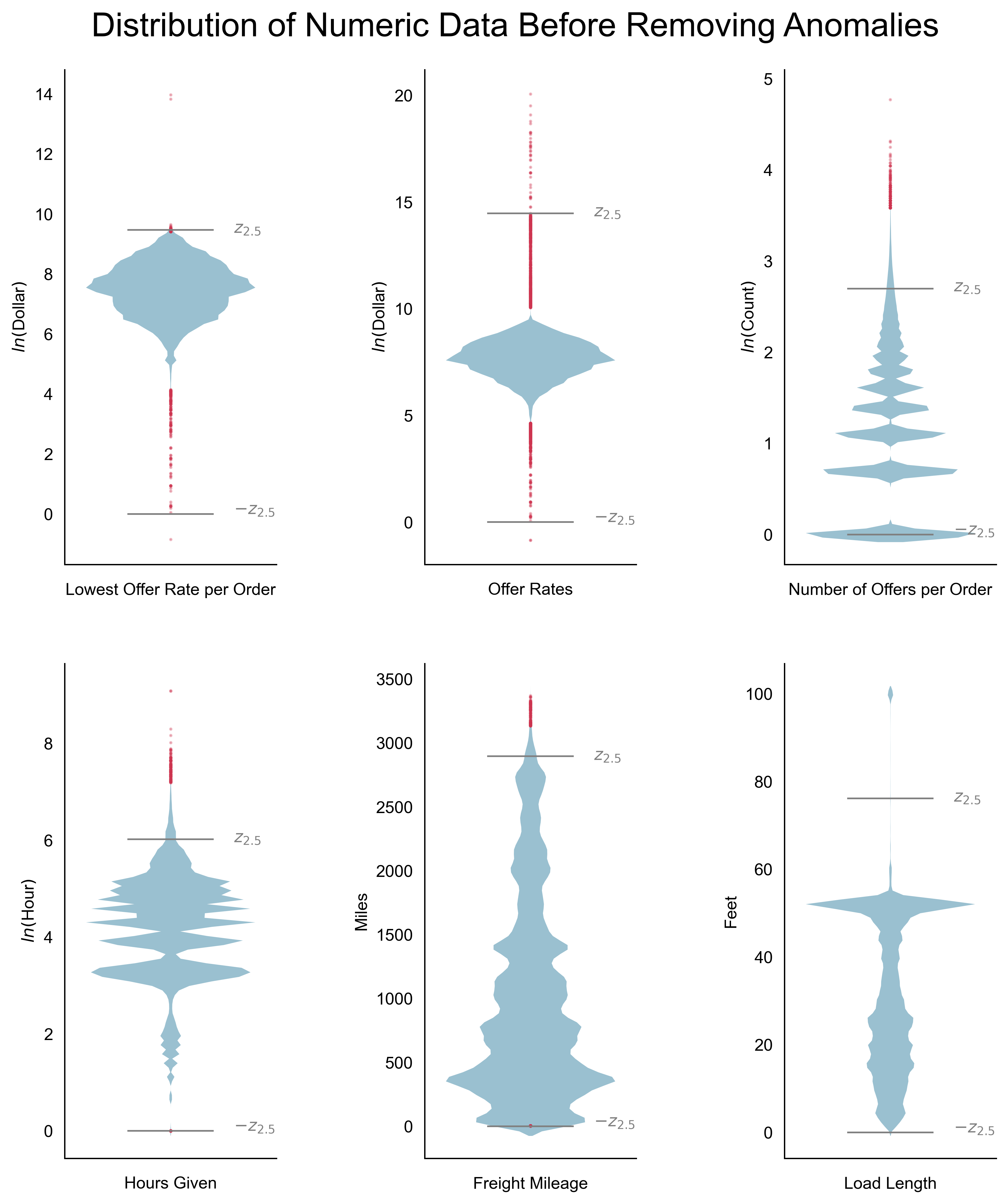
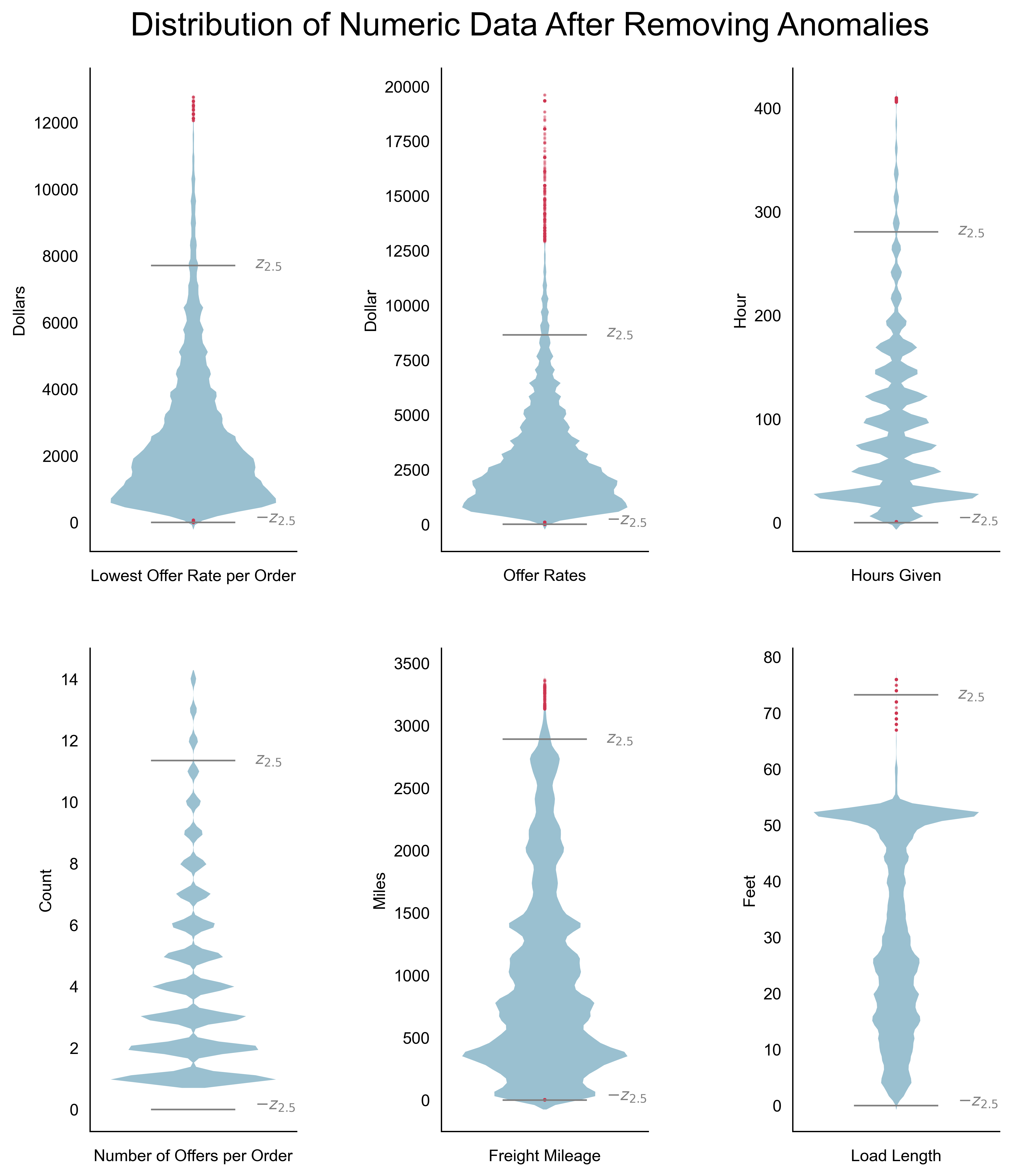
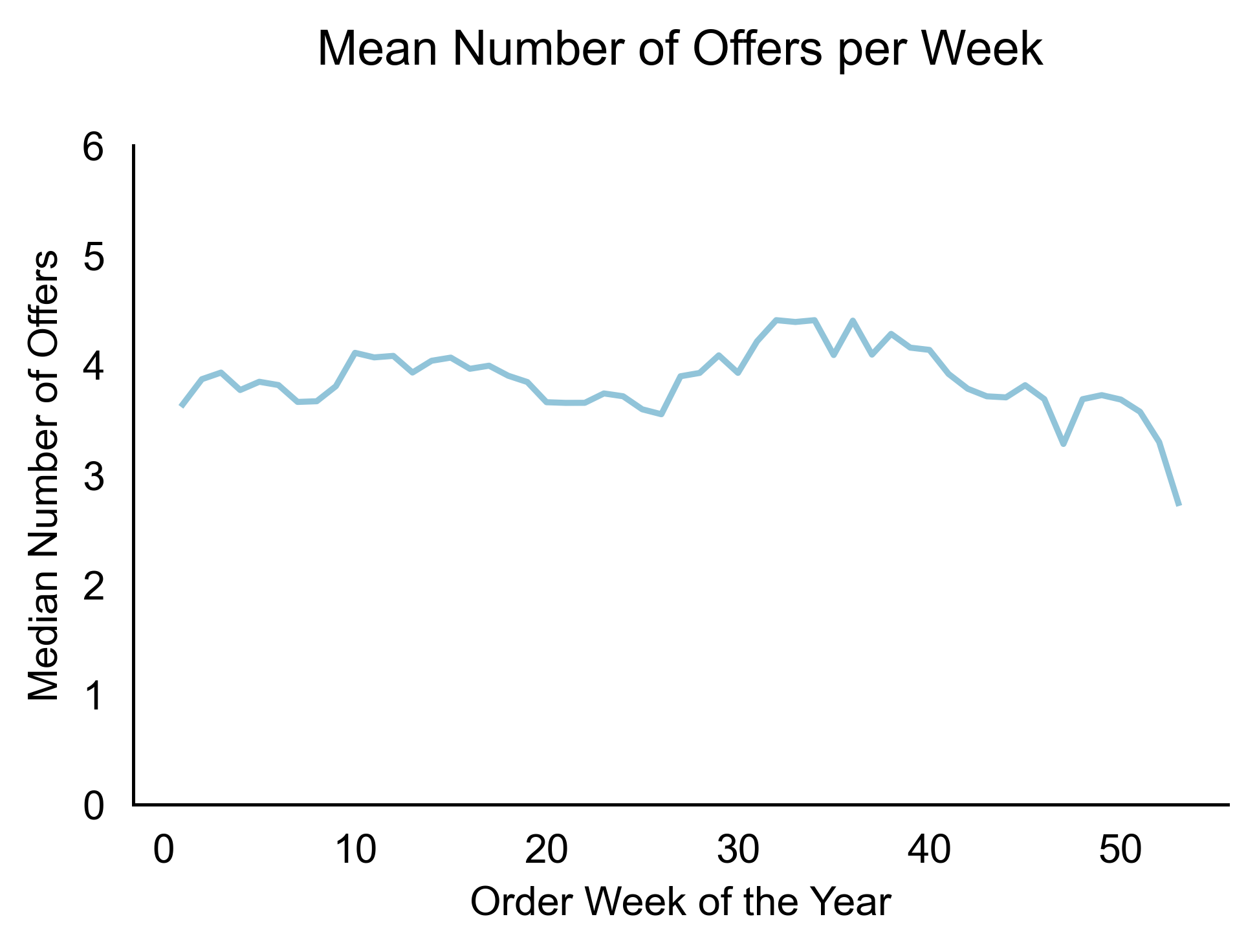
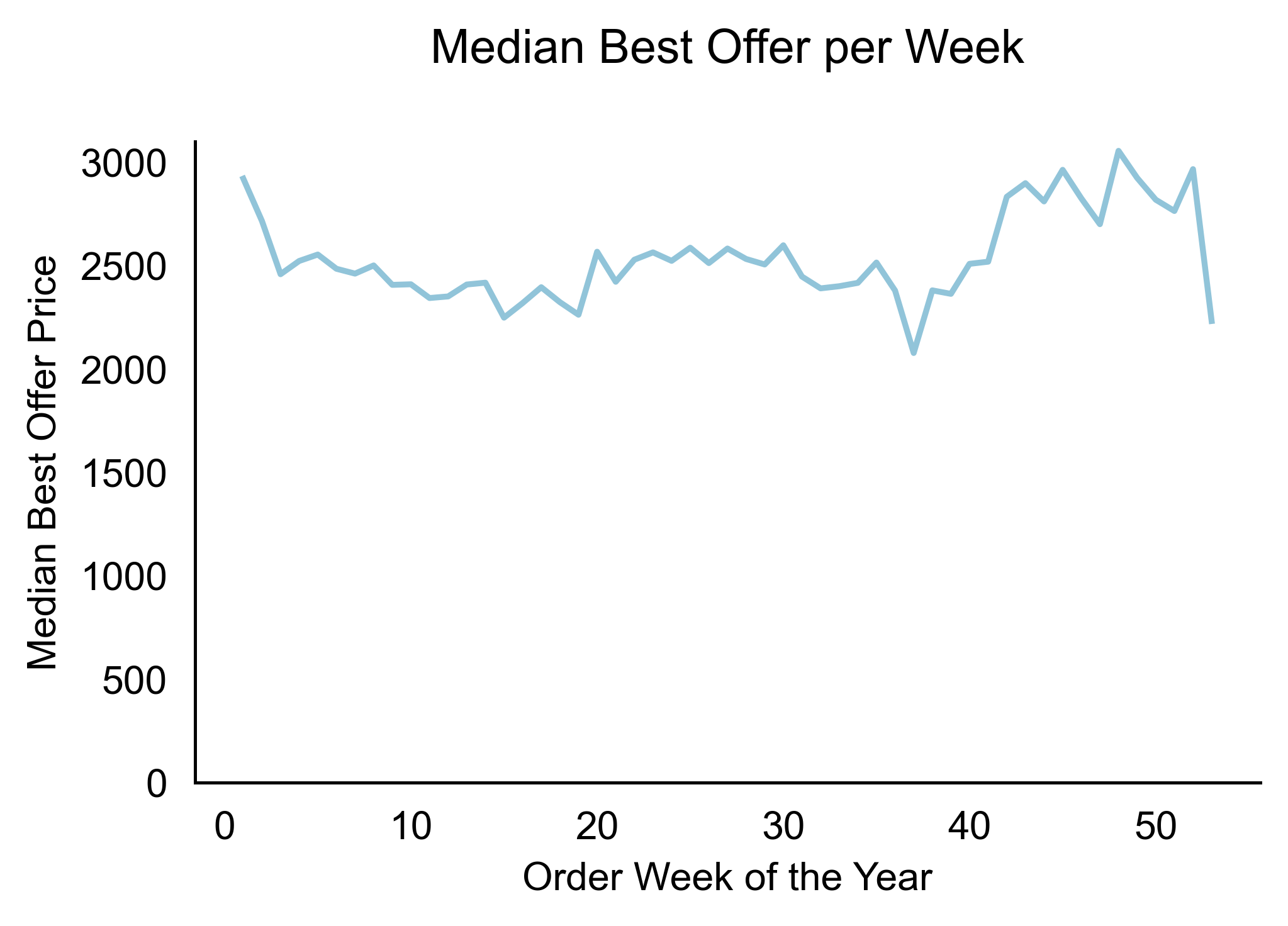
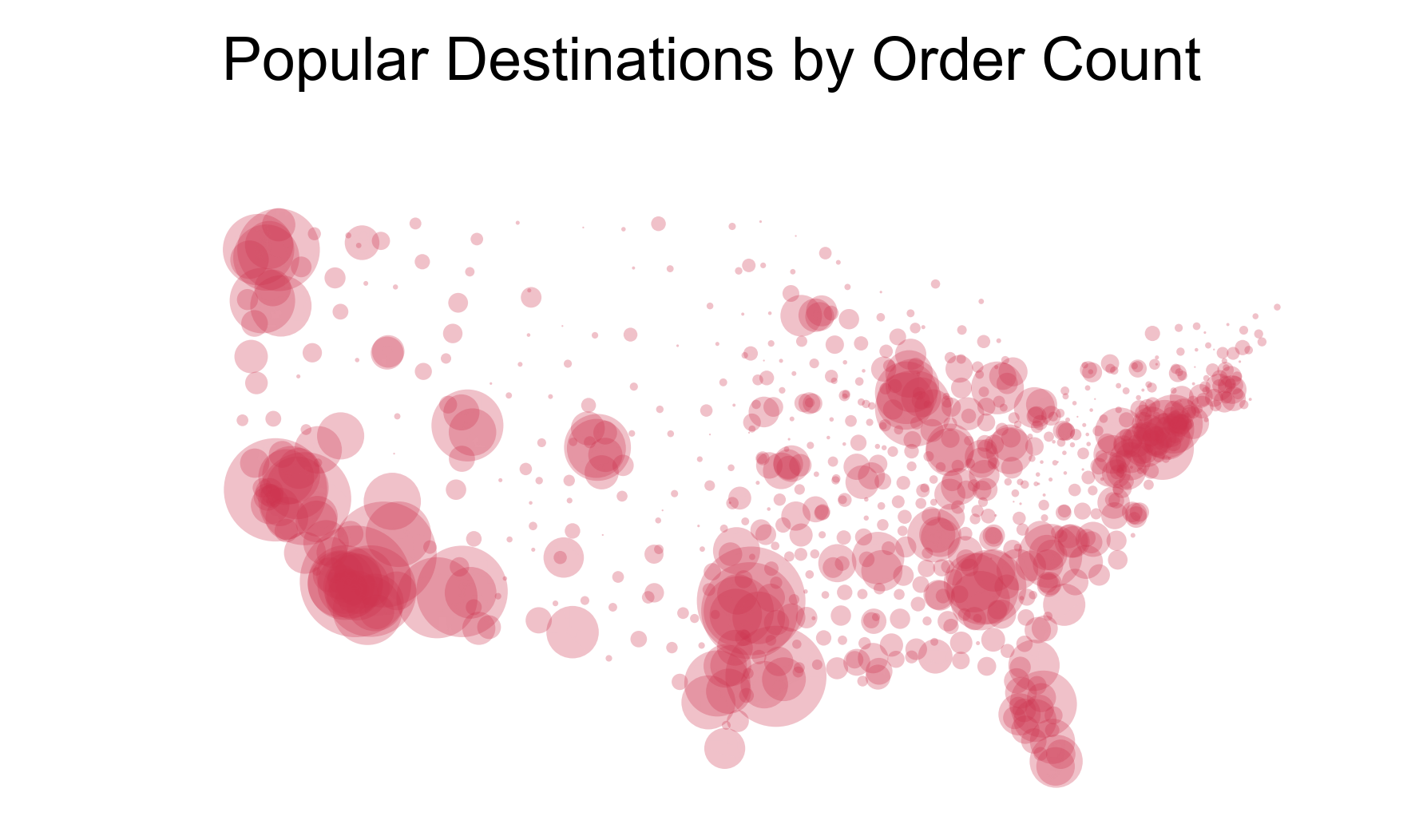
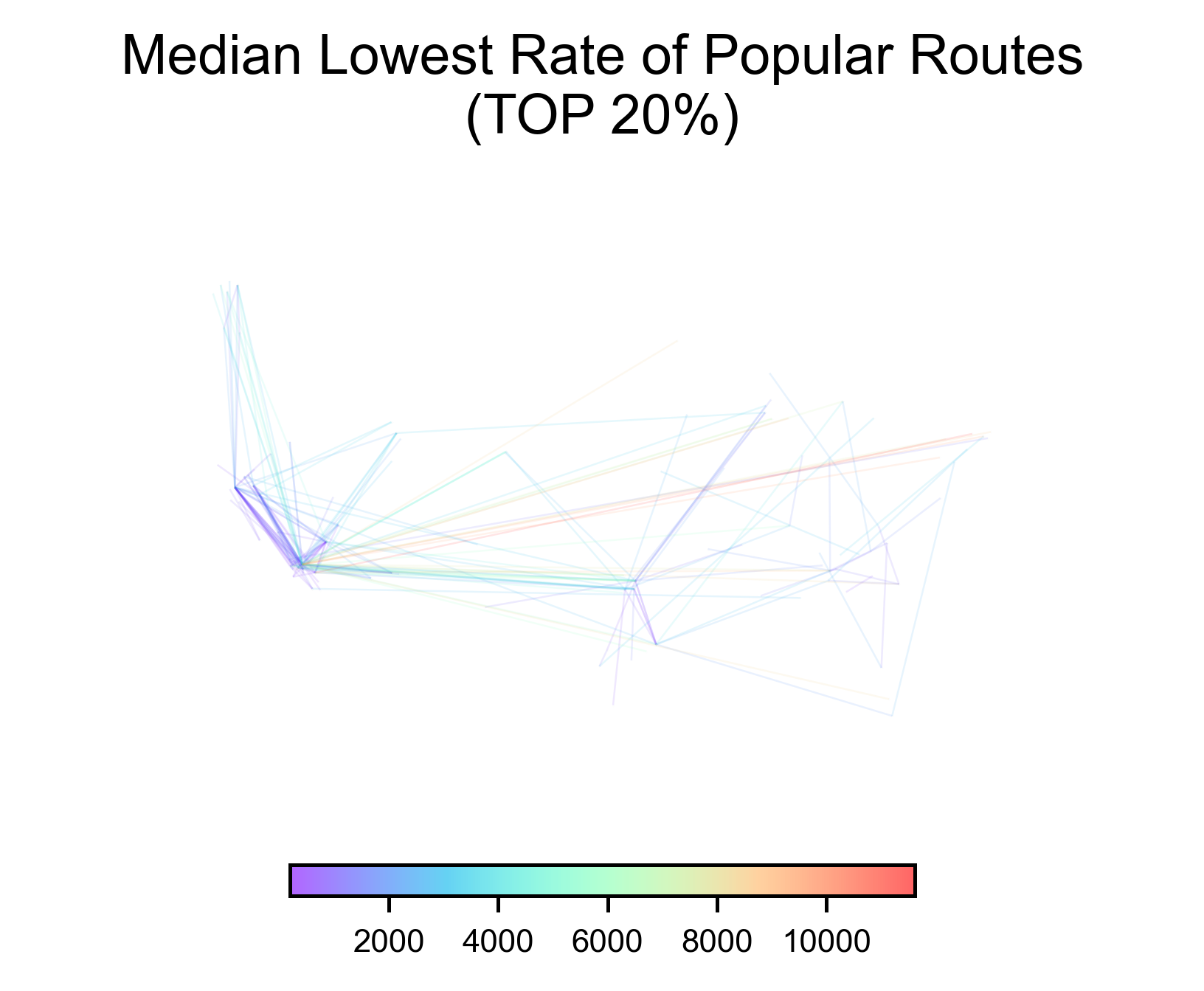
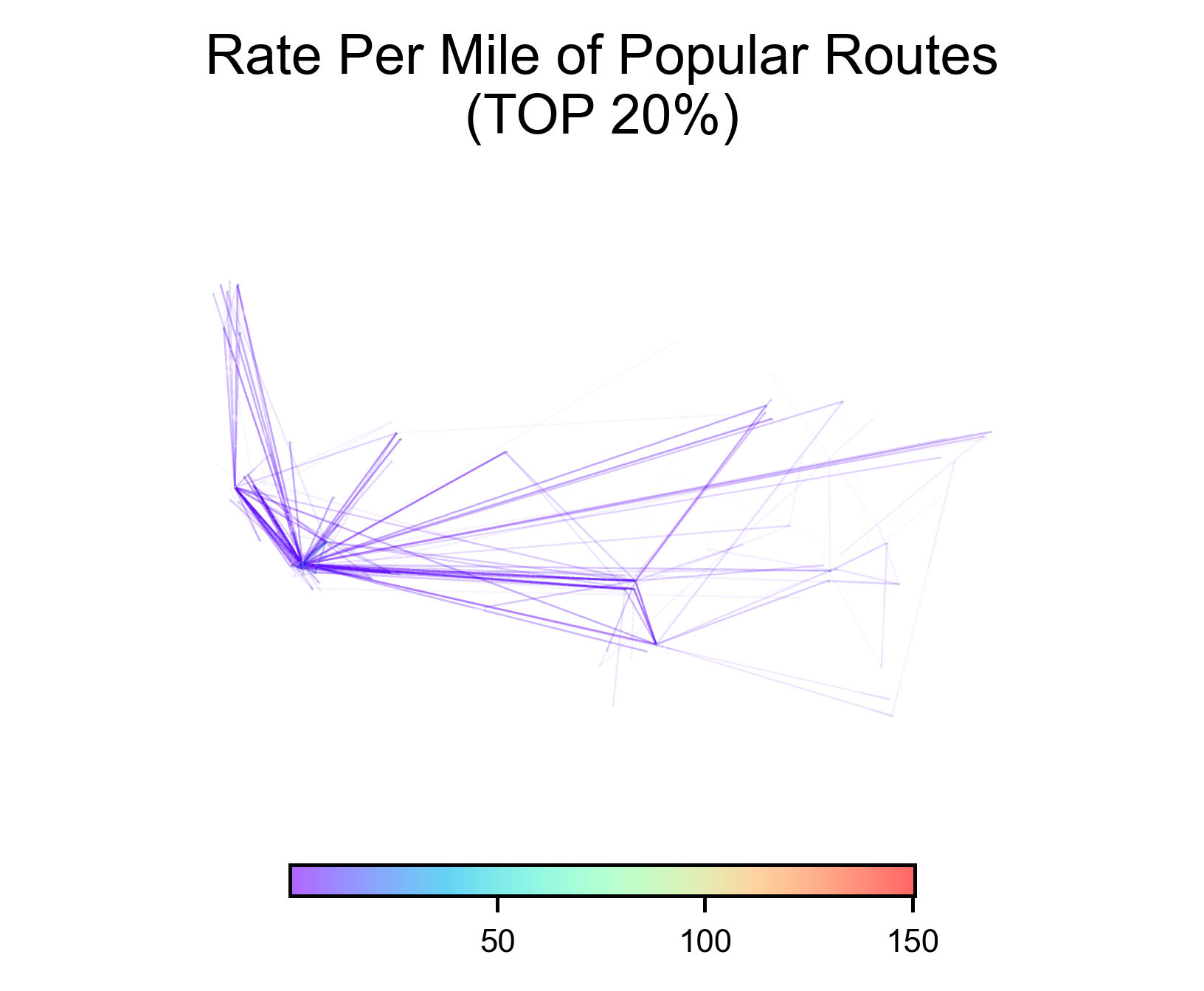
Clustering zip codes to 10 regions enables ML models to use the 857 unique origin and destination zipcodes data as categorical features.
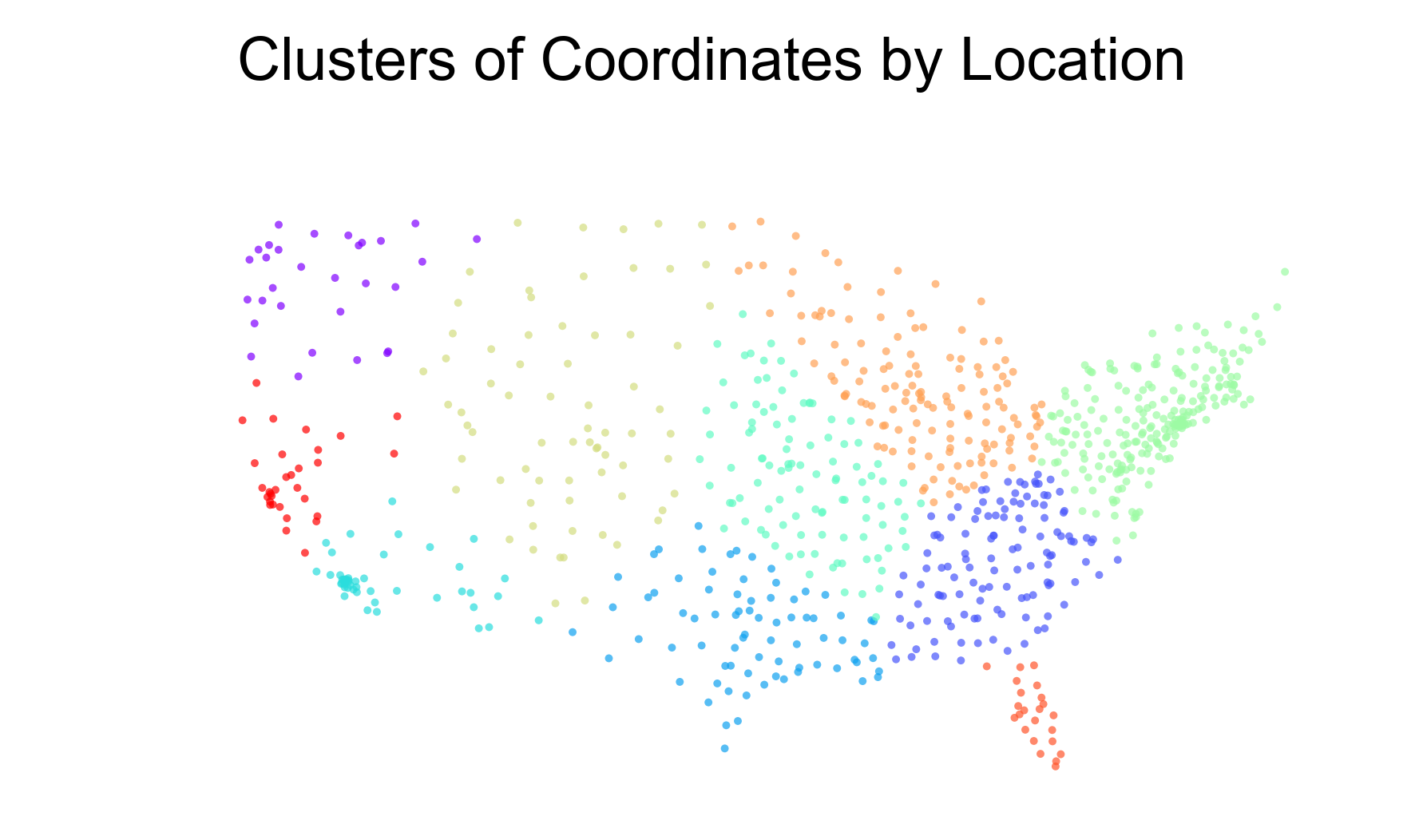
Given that the gap between initial and final offer rates vary by the number of offers an order receives, a model that predicts the number of offers an order will received needs to be built.
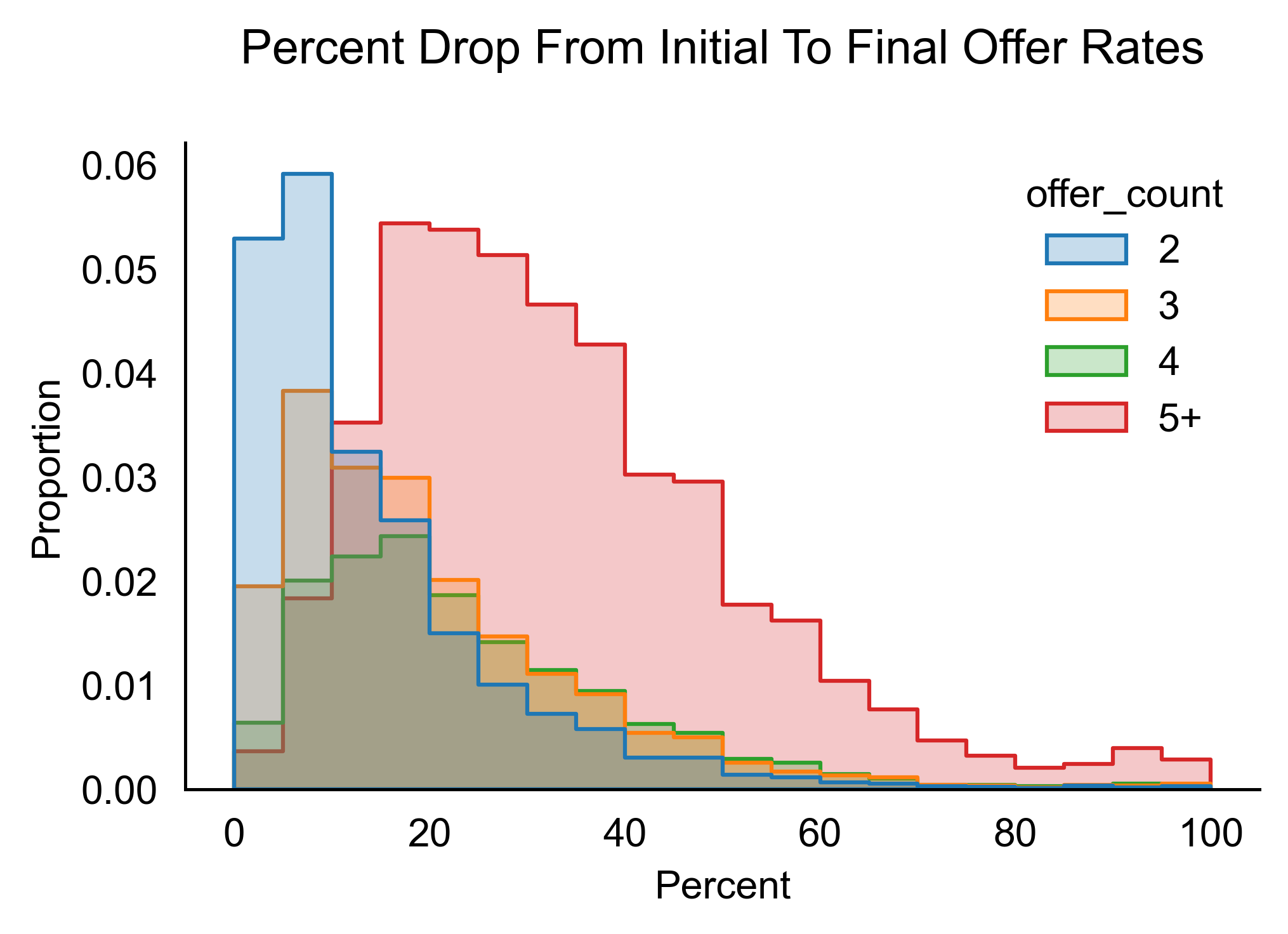
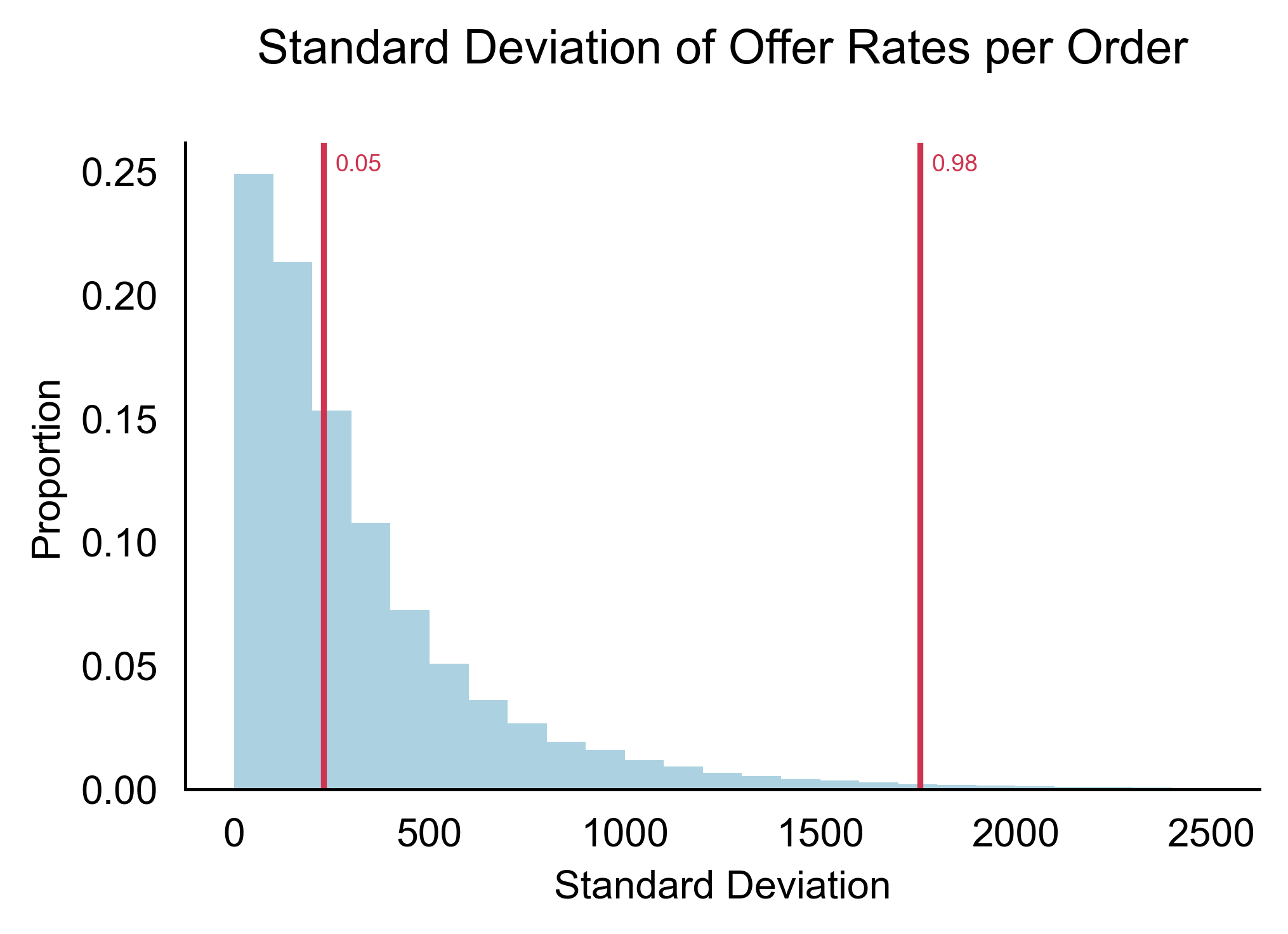
METHODS
An estimate of offer rates is needed to identify a good offer. The EDA hints the importance of predicting the number of offers when estimating offer rates.
The goal is to identify the best offer, not to predict the magnitudes of offer rates. Thus, a classifier model is needed.
All in all, a two-part hybrid model should be created.

XGB Regressor, Decision Tree, and XGB Classifier are the best models to predict the offer rate, estimate number of offers, and identify best offers.
MODEL SELECTION
XGB Regressor, Decision Tree, and XGB Classifier are the best models to predict the offer rate, estimate number of offers, and identify best offers.
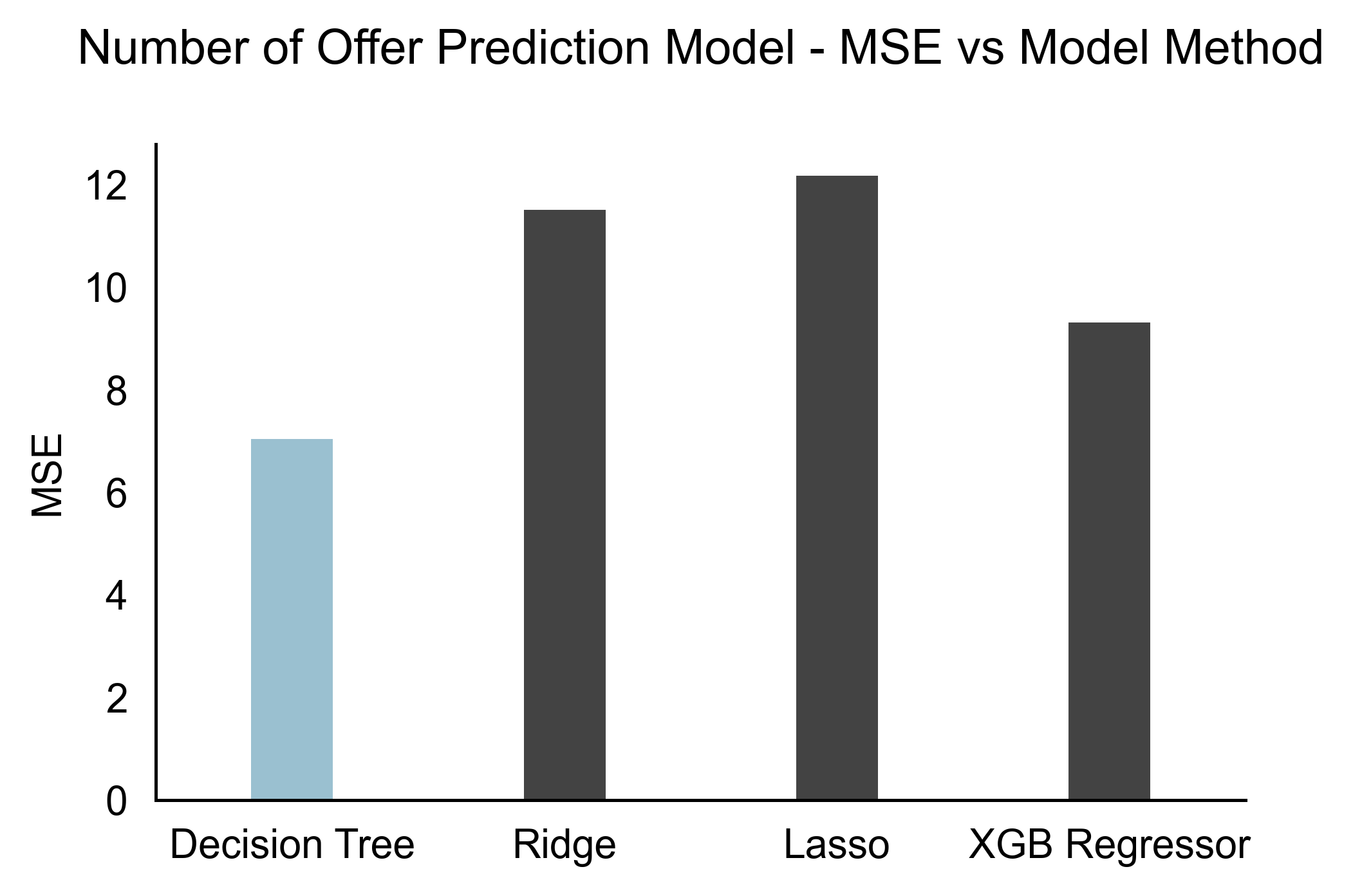
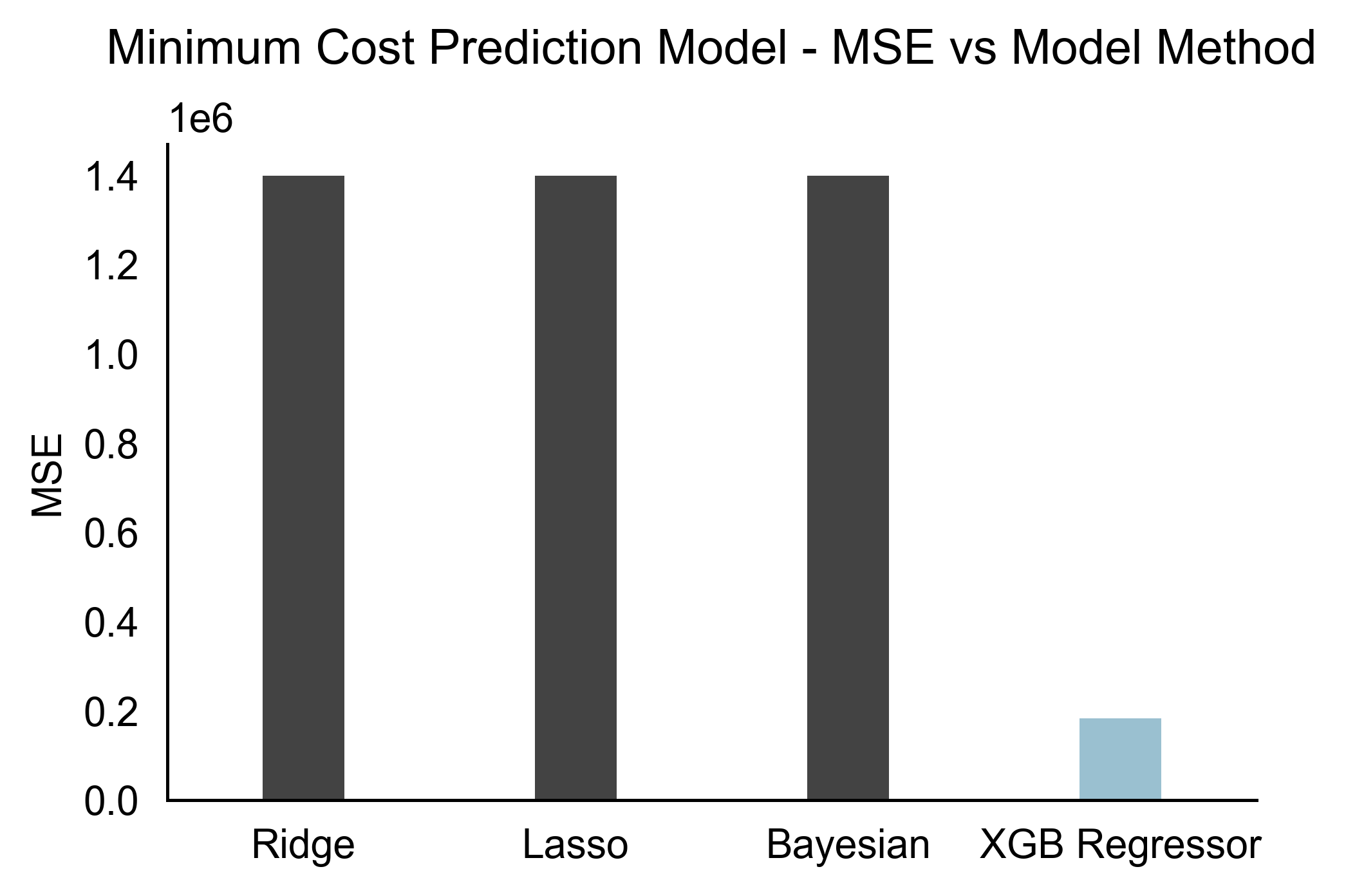
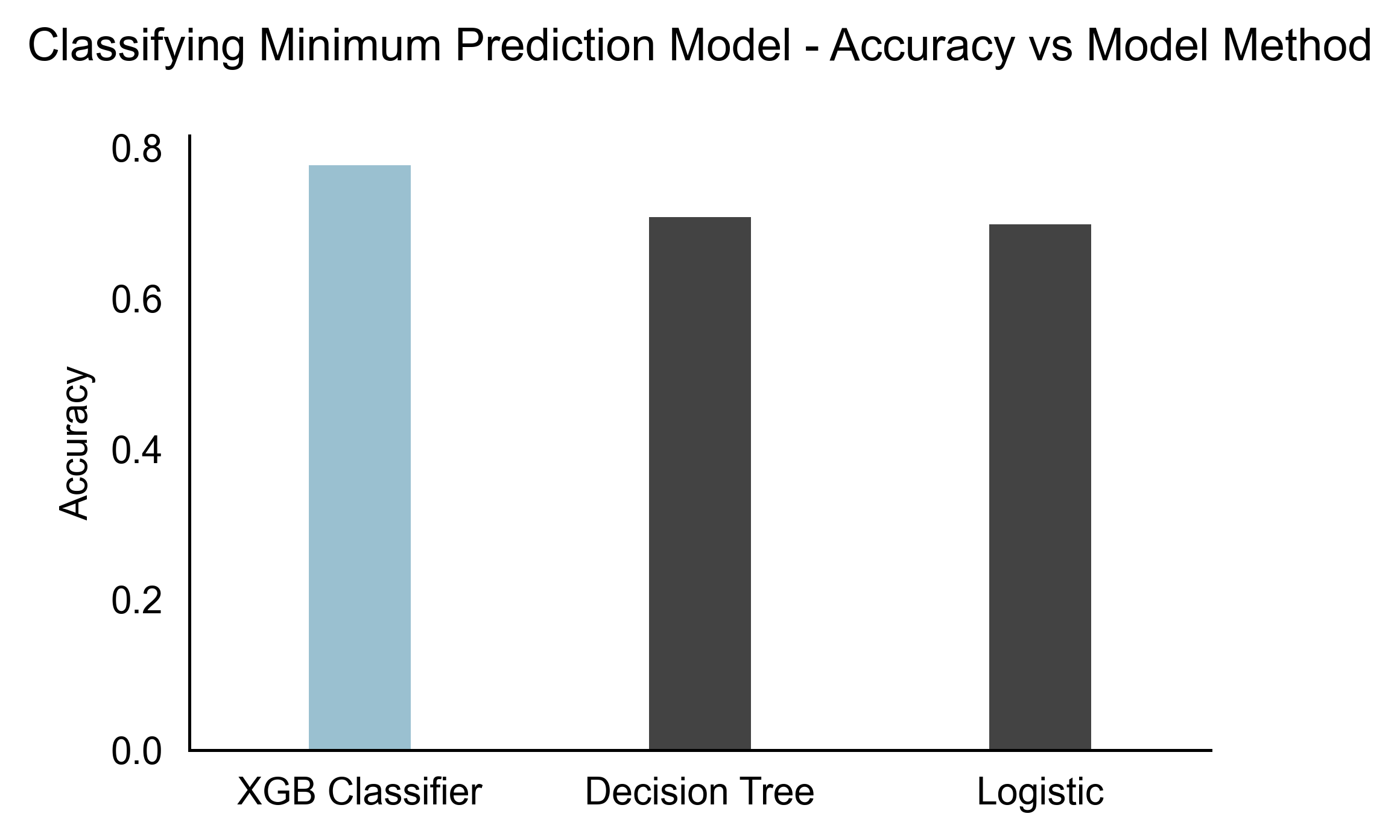
For each of the models, the importance of each feature was calculated.
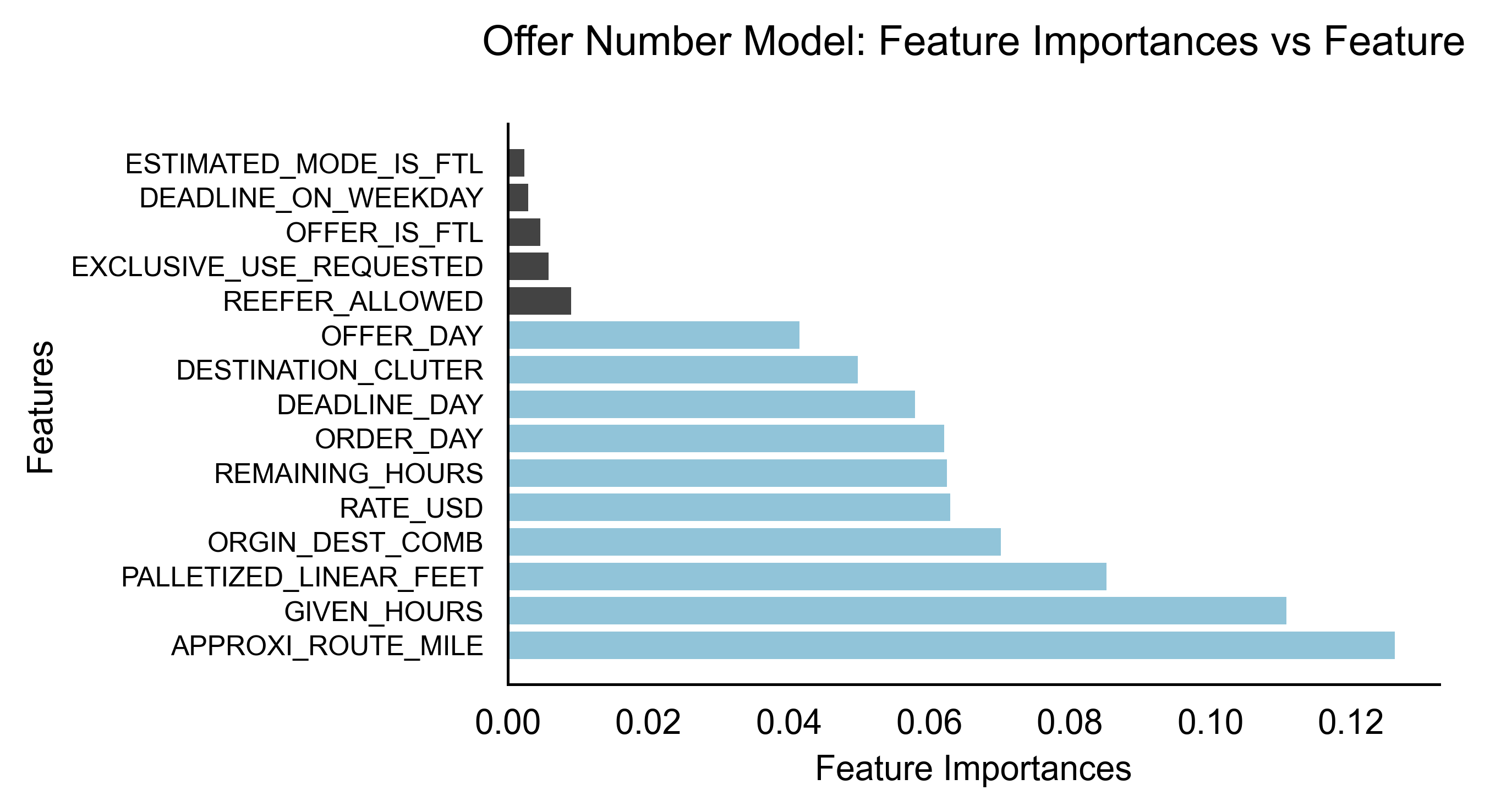
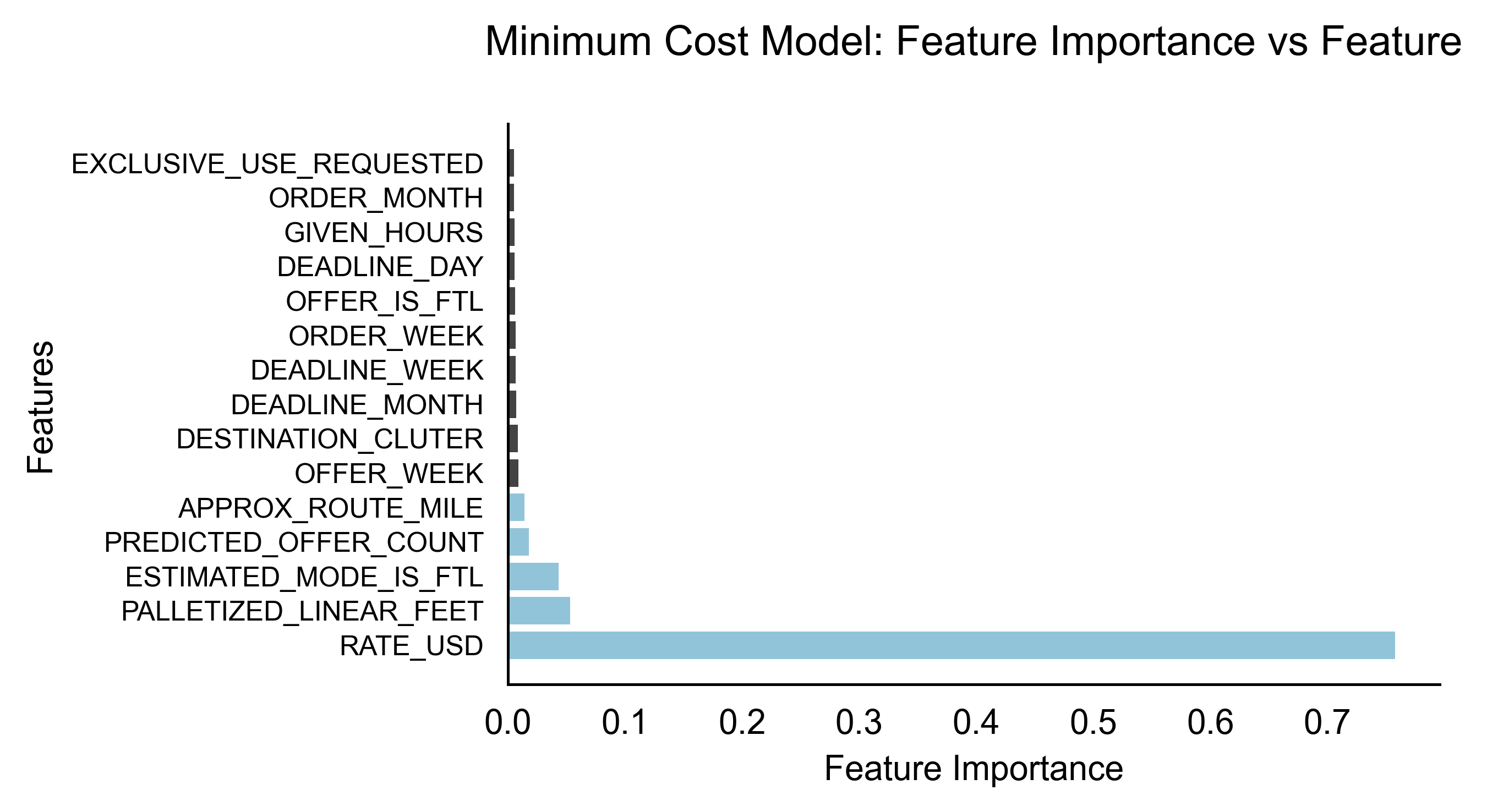
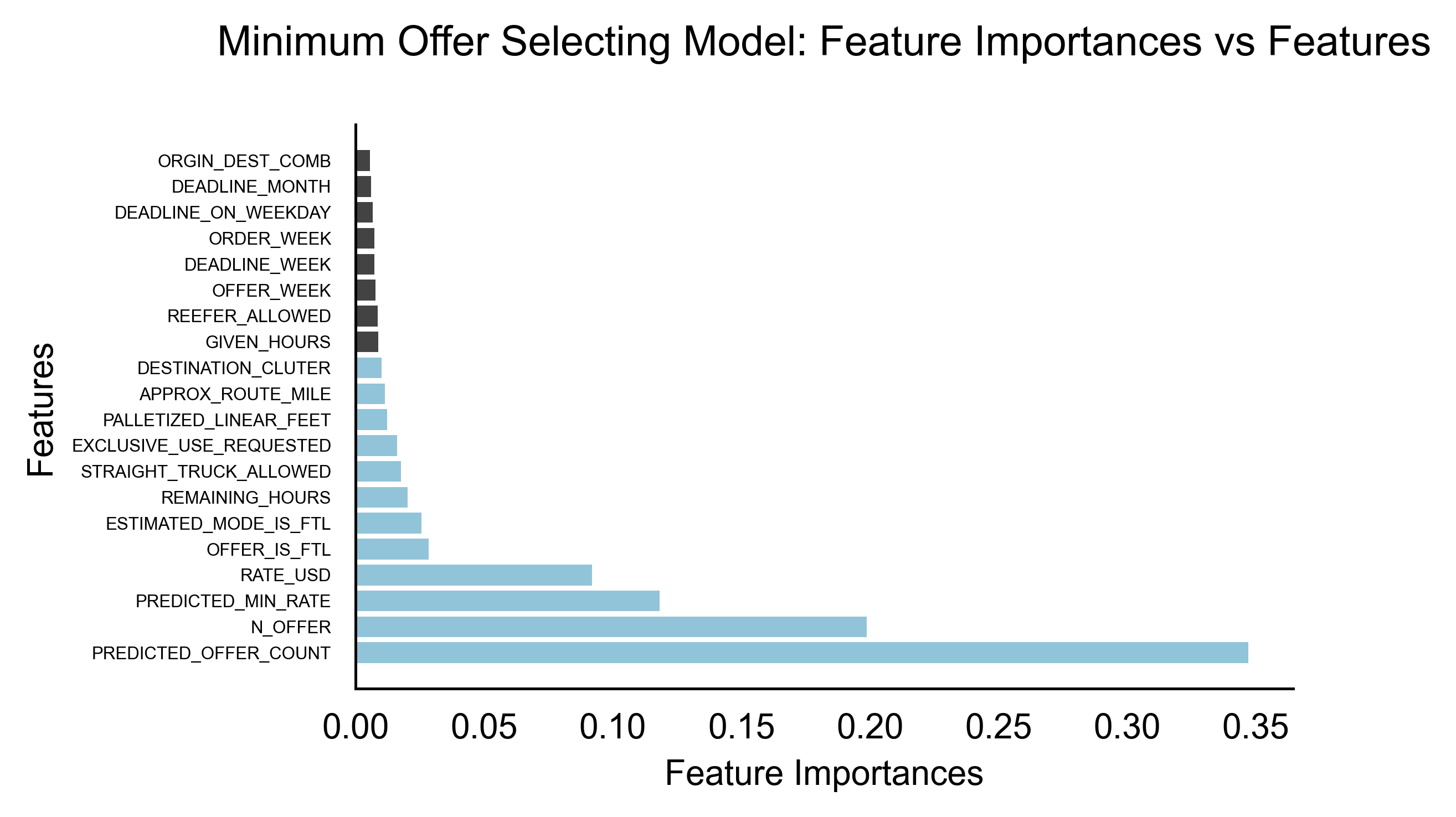
RESULTS
The hybrid model has an 56.0% accuracy in identifying best offers. That of Flock Freight is 51.7%.
The final model is able to identify offers with lowest rates 8.2% more times than the original Flock Freight model does.
The hybrid model scores 81.4% in sensitivity and 71.8% in specificity.
That is, the hybrid model is able to identify 81.4 best offers for every 100 best offers.
Moreover, the hybrid model is able to identify 71.8 bad offers for every 100 bad offers.
